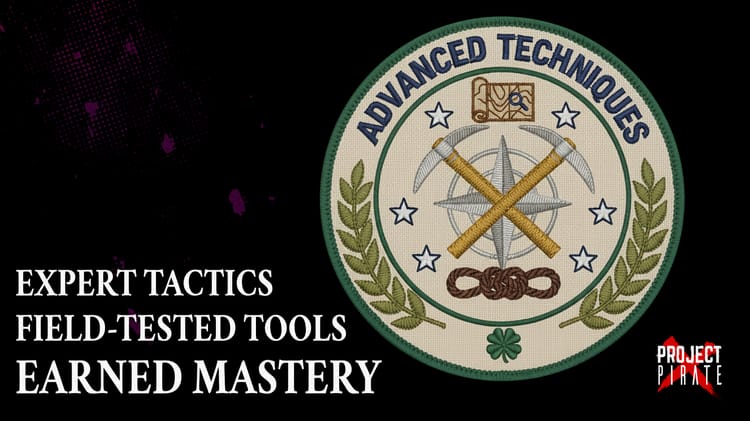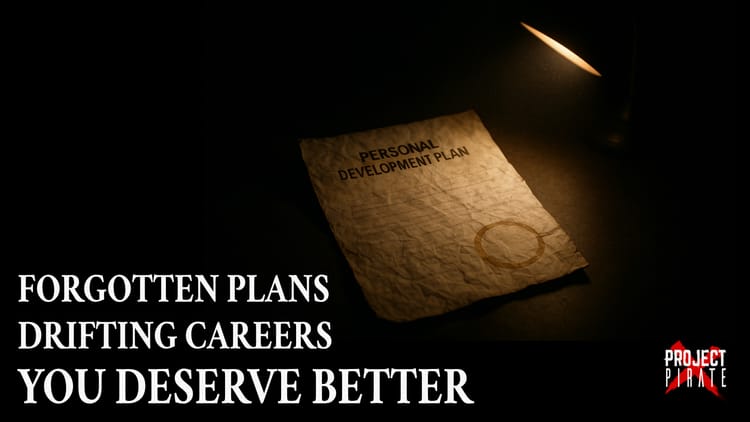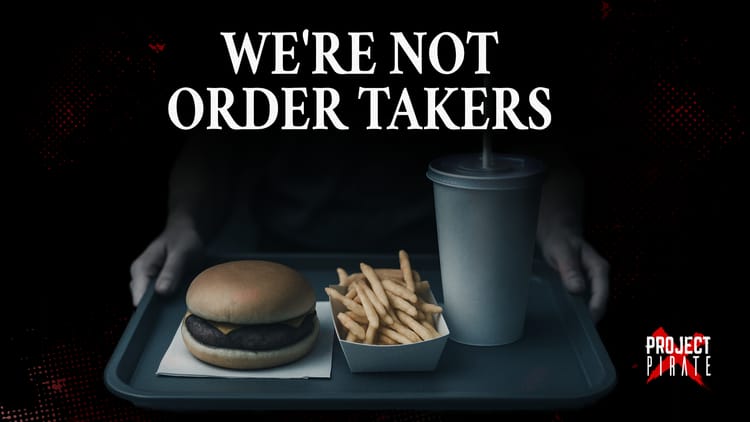The Hurdle Rate Framework: A Strategic Approach to Project Portfolio Optimisation

Introduction
In the ocean of enterprise portfolios and projects, focus can be lost by the sheer number of initiatives taking place across domains, product lines and services all under the auspices of efficiency, cost reduction and scaling future growth. Every team believes their project is vitally important in supporting the wider corporate goals and departmental objectives.
Yet beneath this well-intentioned activity lies a fundamental challenge: how do executives cut through the noise to identify which projects truly deliver value, and which are simply consuming resources while delivering marginal returns? Traditional business case assessments, with their optimistic projections and elaborate justifications, often fail to drive the hard decisions needed to optimise enterprise portfolios.
This is where the concept of a "hurdle rate" becomes transformational - not just as a financial metric, but as a ruthless lens for portfolio rationalisation that can deliver immediate, measurable impact across the entire enterprise.
The Project Immortality Problem
Why Projects Never Die
Despite elaborate governance frameworks, one uncomfortable truth pervades enterprise portfolios: projects are rarely killed. For all the surface-level tracking - RAG status reports, milestone reviews, RAID logs and financial checkpoints - the reality is that once a project enters the portfolio, it develops an almost supernatural ability to survive.
"Most projects are immortal zombies consuming resources while delivering marginal returns."
Traditional project assurance processes create an illusion of control while failing to drive decisive action. Financial reviews become exercises in creative accounting, where numbers are massaged, timelines adjusted and benefits pushed further into the future. Multi-year projects with large NPV calculations in later years become particularly immune to scrutiny - the promised land is always just over the horizon, making current struggles seem like temporary setbacks rather than fundamental flaws.
The Bold Claims Epidemic
The situation becomes more complex when projects make audacious revenue growth promises. Surface-level evaluation makes these difficult to challenge - after all, who wants to be the executive that killed the project promising to deliver 20% revenue growth? Yet beneath these headline figures lies a more troubling question: how do we actually know that project outcomes will deliver the promised results?
Business cases are built on assumption modelling, but they exist in isolation from the dozens of other factors influencing business performance. Marketing launches new products, market demand shifts, interest rates change, customer acquisition campaigns succeed or fail - none of these variables were factored into the original project business case, yet all can significantly impact whether projected outcomes materialise.
The Attribution Impossibility
This creates what might be called the "attribution impossibility" - when revenue does grow, multiple projects simultaneously claim credit. The marketing automation project, the customer experience initiative, the operational efficiency program and the digital transformation workstream all point to the same revenue increase as validation of their individual contribution. The ability to measure their discrete impact becomes virtually impossible, yet the headline figure of revenue growth gets reported by dozens of projects, each claiming their initiative was the catalyst for the company's success.
The Change Absorption Crisis
Beneath the attribution challenge lies an even more fundamental problem: organisational capacity to absorb change. While business cases model benefits in isolation, they ignore the cumulative impact of running dozens of parallel initiatives across the enterprise. Each project requires stakeholder time, executive attention, process adjustments and cultural adaptation. The result is change fatigue that reduces the effectiveness of everything in the portfolio.
When employees are simultaneously adapting to new systems, revised processes, restructured teams and updated procedures, the cognitive load becomes overwhelming. Projects that might deliver modest benefits in isolation fail to achieve even those returns because the business lacks the capacity to implement them effectively.
The Hurdle Rate Framework: A Ruthless Lens for Value
The Fundamental Principle
The hurdle rate framework cuts through the complexity and attribution challenges by establishing a brutally simple principle: every project must generate benefits that are at least 10 times the cost of the resources deployed to deliver it. This isn't just a financial metric - it's a strategic filter that forces honest conversations about resource allocation and expected outcomes.
Defining the Hurdle Rate
The mathematics are deliberately straightforward. If a 'Business Improvement Specialist' costs £65,000 per year, any project they work on must generate at least £650,000 in quantifiable benefits. For a 12-week project, the resource cost is £15,000 (£65K ÷ 52 weeks × 12 weeks), meaning the project must deliver a minimum of £150,000 in benefits to "wash its face."
The 10:1 ratio isn't arbitrary - it accounts for several realities that traditional business cases often ignore:
- Implementation risk: Not all planned benefits will materialise
- Opportunity cost: Resources could be deployed elsewhere
- Overhead burden: The true cost of project management, governance and coordination
- Measurement difficulty: Benefits that are hard to track tend to be overestimated
- Time value: Immediate costs versus future benefits
- Resource concentration multiplier: Better-resourced projects deliver faster, with higher success rates
When resources are spread across multiple modest-return projects, each initiative operates with constrained capacity and divided attention. Concentrating those same resources on fewer, higher-impact projects often creates a multiplier effect - the combined output exceeds what would have been achieved through the distributed approach.
Practical Application
Individual Projects: A single consultant working on process improvement must identify savings or revenue generation worth 10 times their allocated cost. This immediately eliminates low-impact activities masquerading as strategic initiatives.
Team-Based Projects: For larger initiatives, aggregate the full-loaded costs of all team members. A five-person team costing £325,000 annually must deliver £3.25M in benefits. The math becomes unforgiving quickly.
Time-Adjusted Calculations: Shorter projects face higher hurdle rates per unit of time, forcing focus on high-impact, quick-win opportunities. Longer projects must demonstrate sustained value delivery, not just promise it in year three.
The Multi-Year Challenge
Complex projects with 3-5 year NPV calculations present the greatest test of the framework. Traditional business cases often show minimal benefits in year one (labelled as "investment phase") with exponential returns in subsequent years. The hurdle rate framework demands that even accounting for sunk costs, the total expected return must clear the 10:1 threshold, and crucially, the assumptions underlying those future benefits must be defensible under scrutiny.
This approach immediately exposes projects where year one is genuinely investment (building capability, implementing systems) versus those where year one is simply poor planning or unrealistic expectations.
The Simplicity Controversy
Let's be completely honest: for many, this approach will sound like a crazy, arbitrary method that lacks the sophistication of proper portfolio analysis and assurance frameworks. The criticism is predictable - it's too simple, too archaic, not strategic enough. Complex organisations have complex needs, surely they require complex solutions?
I accept that criticism entirely. For many executives and transformation professionals, this framework will feel uncomfortably reductive. It strips away the elaborate modelling, the multi-dimensional scoring matrices and the weighted strategic alignment assessments that have become the hallmark of "professional" portfolio management.
Why Simplicity Wins
However, this framework was developed to meet the specific needs of a Group CFO in a FTSE25 company - one who had little patience for pet projects, complex assumption-based forecasts (outside of core strategic bets) and was desperately short on time. In that context, simplicity wasn't a limitation - it was exactly what was needed.
The 10:1 ratio? It felt like the right level of return for high-calibre, well-paid specialists in change, consultancy and project delivery. Could it be different? Absolutely. Your industry, sector, competitive landscape, global reach or local focus will all influence your risk appetite and return expectations. A utility company might be comfortable with 5:1, while a tech startup might demand 20:1.
The Fundamental Question
But here's the underlying truth that sophisticated frameworks often obscure: initiatives should create measurable business impact. Why waste valuable resources on projects that don't deliver dramatic results? The elaborate governance structures, the nuanced business cases and the strategic alignment assessments - they're all ultimately designed to answer one simple question: "Is this worth doing?"
The hurdle rate framework answers that question with brutal clarity, forcing executives to confront uncomfortable truths about their portfolio rather than hiding behind the complexity of their analysis.
Implementing the Framework: The Practical How-To
Step 1: Resource Cost Calculation - The Real Numbers
Forget the daily rates on contracts or the basic salaries on organisational charts. The hurdle rate framework demands full-loaded costs that reflect the true investment in each resource:
Full-Loaded Cost Components:
- Base salary or contractor rate
- National Insurance, pension contributions and benefits (typically 25-30% uplift)
- Management overhead and support functions
- Project governance and coordination costs
For that £65K Business Improvement Specialist, the full-loaded cost is likely closer to £80K once you account for the complete organisational burden. This isn't pessimistic accounting - it's honest cost recognition.
Time Allocation Reality Check: Don't assume 100% allocation. Account for holidays, training, administrative tasks and the inevitable "other duties as assigned." A realistic utilisation rate for project work is typically 70-80%, which increases your effective hourly cost significantly. This is a true cost view versus overhead costs (holidays, admin, training) are business-as-usual expenses that exist regardless of projects.
Step 2: Benefit Quantification - Separating Signal from Noise
The framework's power lies in its intolerance for benefit inflation. Every claimed benefit must pass three tests:
The Measurability Test: Can this benefit be tracked with existing systems and processes? If you need to build new measurement capabilities just to prove the benefit exists, that's a red flag.
The Attribution Test: Can you reasonably isolate this benefit from other business activities? Revenue increases that might be influenced by marketing campaigns, market conditions or competitive factors fail this test.
The Timing Test: When will the benefit actually materialise? Benefits that appear in month 18 of a 12-month project need to be discounted accordingly.
Hard vs. Soft Benefits:
- Hard benefits reduce actual costs or generate measurable revenue
- Soft benefits improve capability, morale or strategic positioning
- The framework only counts hard benefits toward the hurdle rate
- Soft benefits can be recorded separately but don't contribute to the 10:1 calculation
Step 3: Portfolio-Wide Application
The Inventory Process: Start with a complete catalogue of active projects. Not just the major programs that appear in board presentations, but every initiative consuming resources across the organisation. This includes:
- Formal project portfolio items
- Departmental improvement initiatives
- IT upgrades and system implementations
- Process improvement activities
- Compliance and regulatory projects
The Evaluation Matrix: Create a simple spreadsheet with columns for:
- Project name and owner
- Total resource cost (full-loaded)
- Project duration
- Claimed benefits (hard benefits only)
- Benefit timing
- Hurdle rate calculation (benefits ÷ costs)
- Pass/fail against 10:1 threshold
Step 4: The Decision Matrix - What to Do When Projects Fail
When projects fail the 10:1 hurdle rate, executives face four distinct pathways. Each requires different actions and has different organisational implications:
Category 1: The Clear Failures (0-3:1 ratio)
These projects consume significant resources while delivering minimal measurable benefits. Common examples include:
- Process documentation initiatives with no efficiency gains
- Training programs without performance improvements
- Technology upgrades that don't reduce costs or increase capacity
Action: Immediate termination. These projects are organisational drag and should be stopped within 30 days. Redeploy resources to higher-value activities or return them to operational roles.
The resource redeployment creates immediate benefits beyond cost savings. Concentrated resource allocation to fewer, higher-impact projects typically delivers:
- Faster implementation timelines through better resourcing
- Higher success rates through focused executive attention
- More sustainable outcomes through adequate change management support
- Reduced organisational change fatigue as employees deal with fewer simultaneous initiatives
Category 2: The Marginal Projects (3:1-6:1 ratio)
Projects showing some value but falling well short of the hurdle rate. Often these are well-intentioned initiatives that have scope-creeped beyond their original intent.
Action: Two options - aggressive rescoping to focus on highest-value elements only, or project termination with lessons learned. Rarely should these continue as-is.
Category 3: The "Almost There" Projects (6:1-9:1 ratio)
Projects approaching but not reaching the hurdle rate. These require the most nuanced judgement calls.
Action: Detailed review of assumptions and scope. Can benefits be increased through wider rollout? Can costs be reduced through more efficient delivery? If neither is possible within 60 days, treat as Category 2.
Category 4: The Strategic Exceptions
Projects that fail the hurdle rate but serve critical strategic purposes - regulatory compliance, market entry and competitive defence.
Action: Don't simply exempt strategic projects from financial discipline. Instead, apply the hurdle rate framework across the entire project lifecycle. If a strategic initiative will cost £15 million in resources over three years, it must deliver transformational results that justify that investment. Calculate the total cost of all resources over the full implementation duration against projected NPV benefits. Strategic projects should face even higher scrutiny given their scale and impact on organisational capacity.
Step 5: The Execution Challenge - Making Hard Decisions
The Political Reality: Every failing project has stakeholders who will argue for its continuation. Project managers whose careers are invested in delivery. Departments who see the initiative as validation of their strategic importance. Executives who originally sponsored the work.
The Communication Strategy: Frame decisions around resource optimisation, not project failure. "We're reallocating resources to higher-impact opportunities" sounds better than "Your project is being cancelled because it's not worth doing."
The Rapid Implementation Imperative: Once decisions are made, move quickly. Prolonged decision-making processes allow political resistance to build and create uncertainty that damages remaining projects. Set a 10-week window for complete portfolio rationalisation.
Framework Application Across Different Delivery Models
Fixed Projects vs. Dynamic Programmes
The hurdle rate framework applies differently depending on the delivery model and resource allocation approach:
Fixed Projects: Traditional projects with defined scope, timeline and resources lend themselves most directly to the 10:1 calculation. Resources are allocated for the project duration, costs are predictable and benefits should be measurable within the project lifecycle.
Agile Release Trains: These present more complex applications of the framework. Agile Release Trains typically operate on fixed annual budgets with dynamic work prioritisation. Here, the hurdle rate applies at the programme level - the entire annual investment must generate 10:1 returns, but the Product Owner has flexibility to maximise benefits through adaptive planning throughout the year.
Multi-Departmental and External Agency Programmes: These require contingency planning and different risk considerations. The hurdle rate calculation must account for coordination complexity, external dependencies and delivery risk across multiple organisations. A modified approach might apply higher hurdle rates (12:1 or 15:1) to account for increased execution risk.
Rolling Business Cases vs. Fixed Delivery
Rolling Business Cases: Agile Release Trains and platform programmes often operate with rolling business cases that are refreshed annually. The hurdle rate framework supports this by requiring each annual investment to justify itself independently. This prevents the "sunk cost fallacy" where previous investments are used to justify continued spending.
Continuous Value Delivery: Dynamic programmes must demonstrate ongoing value realisation rather than promised future benefits. The framework can be applied quarterly or bi-annually to ensure programmes continue to meet return thresholds as they evolve.
The Change Management Disconnect
A critical observation emerges around the separation between project delivery and benefits realisation:
Delivery vs. Benefits Ownership: Project teams are often tasked with delivering outputs (systems, processes, capabilities) while separate change management functions are responsible for achieving outcomes (the benefits case). This creates accountability gaps where projects declare success based on delivery while benefits remain unrealised.
Integrated Accountability: The hurdle rate framework demands integrated accountability - project success must be measured by benefits achieved, not deliverables completed. This requires closer integration between delivery teams and change management functions, with shared accountability for the 10:1 return.
Funding Model Distinctions - Change vs. Run
A critical refinement to the hurdle rate framework involves recognising different funding models and their associated return expectations:
Change Projects:
- Funded through transformation budgets or capital investment
- Designed to deliver step-change improvements in capability or performance
- Typically include significant resource allocation and often external expertise
- Should meet the full 10:1 hurdle rate given their investment nature and change mandate
Run Projects:
- Funded through operational budgets
- Focused on maintenance, compliance or "keeping the lights on" activities
- Often necessary regardless of return ratio
- May warrant a modified hurdle rate (e.g., 5:1 or 6:1) depending on sector and market conditions
The Funding Model Test: Before applying the hurdle rate, categorise each project by its funding source and strategic intent. This prevents the framework from eliminating essential operational activities while maintaining rigour around transformation investments.
Sector-Specific Considerations:
- Regulated industries: May accept lower returns on compliance-driven run projects
- High-growth sectors: May demand higher returns (15:1 or 20:1) on change projects
- Mature markets: May differentiate more sharply between change (10:1) and run (5:1) expectations
- Capital-intensive industries: May apply different ratios to projects with significant capital components
Important Caveat: Resist the temptation to create multiple hurdle rates based on project categories (tactical, intermediate and strategic). This reintroduces the complexity the framework is designed to eliminate. The funding model distinction is about recognising fundamentally different types of work, not creating loopholes for pet projects.
Case Study: FTSE25 Transformation Results
The Challenge
Working for a FTSE25 CFO, I encountered a transformation portfolio that had grown organically across multiple business units. The CFO's mandate was simple: "Show me which projects are actually worth the money we're spending on them."
The Application
We applied the hurdle rate framework across the entire portfolio over a 10-week assessment period.
The Impact
- Timeline: 10 weeks from assessment start to implementation completion
- Resource redeployment: 144 specialists removed from projects that failed to meet the hurdle rate
- Direct cost reduction: Based on full-loaded costs of £80K per resource (£65K base plus 23% uplift), this represented approximately £11.5M in annual labour savings
- Total program savings: Including eliminated capital expenditure, software licences and external contractor costs, total savings exceeded £15M annually
- Cultural shift: Organisation-wide understanding that projects must demonstrate clear value
- Organisational benefits: Reduced change fatigue, improved focus on high-impact initiatives, and enhanced stakeholder engagement through portfolio simplification
The Unexpected Multiplier Effects:
The resource redeployment created benefits beyond the immediate cost savings. High-impact projects that retained or gained resources delivered results faster than originally projected. Executive attention could focus on fewer initiatives, resulting in better decision-making and obstacle removal. Most importantly, the organisation's change absorption capacity improved dramatically - with fewer concurrent projects, the business could fully implement and realise benefits from the remaining initiatives.
Managing Stakeholder Resistance: Common Objections and Responses
"This Framework is Too Simplistic for Our Complex Business"
The Objection: "We operate in multiple markets with different regulatory requirements, customer bases and competitive dynamics. A one-size-fits-all approach can't capture this complexity."
The Response: Complexity in business doesn't require complexity in decision-making frameworks. The most successful organisations often use simple tools to cut through complexity, not add to it. The hurdle rate provides clarity precisely because it avoids getting lost in endless variables and assumptions. If a project can't demonstrate 10:1 returns despite your complex environment, what does that tell you about its real value?
"You're Going to Kill Strategic Projects That Don't Show Immediate Returns"
The Objection: "Some initiatives are strategic investments that won't pay off for years. You can't measure innovation and capability building with this crude metric."
The Response: Strategic projects deserve even more rigorous scrutiny, not less. If you're investing £15 million in resources over three years, that project must deliver genuinely transformational results. Apply the hurdle rate framework across the entire project lifecycle - total resource costs over full implementation duration against projected NPV benefits. True strategic projects should easily clear the hurdle rate given their scale and importance. If they can't, question whether they're genuinely strategic or simply expensive.
"The 10:1 Ratio is Arbitrary and Too High"
The Objection: "Why 10:1? Why not 5:1 or 15:1? This seems like an arbitrary number pulled from thin air."
The Response: All hurdle rates contain an element of judgement - that's why they're called judgement calls. The 10:1 ratio reflects the reality that high-calibre change resources are expensive and should deliver proportional value. It accounts for implementation risk, opportunity cost and measurement challenges. Your organisation might prefer 8:1 or 12:1 - the key is setting a high bar and sticking to it consistently.
"This Will Stifle Innovation and Risk-Taking"
The Objection: "If we only fund sure bets with guaranteed returns, we'll become risk-averse and lose competitive advantage."
The Response: The framework doesn't eliminate risk-taking - it eliminates the middle ground of projects that are neither safe operational improvements nor bold transformational bets. True innovation projects should either meet the hurdle rate through their expected returns or be explicitly funded as strategic R&D investments. What it does eliminate is organisational mediocrity - resources spread across twenty projects delivering modest results rather than concentrated on five projects delivering transformational impact. Most employees prefer working on initiatives that create visible waves of change rather than contributing to lukewarm improvements that generate little organisational recognition.
"Our Current Governance Processes Already Handle This"
The Objection: "We have robust project assurance, stage gates and portfolio management. We don't need another framework."
The Response: If your current processes are working, you wouldn't have projects that consume resources without delivering proportional value. The hurdle rate framework succeeds precisely where traditional governance fails - in making hard decisions about resource allocation. It's designed to complement, not replace, good project management practices.
Advanced Applications: Beyond Cost Reduction
Revenue Enhancement Projects
The hurdle rate framework extends naturally to revenue-focused initiatives by treating revenue generation as the primary benefit measure:
Sales Effectiveness Programs: A £200K investment in sales training and CRM improvements must generate at least £2M in additional revenue. Track through sales pipeline data and customer acquisition metrics.
Market Expansion Initiatives: Geographic or product line expansion projects face the same discipline. Can the investment team demonstrate 10:1 returns through market research, pilot programs and comparable market analysis?
Customer Experience Improvements: Digital transformation and customer journey optimisation projects must show measurable impact on customer lifetime value, retention rates or conversion metrics that translate to revenue multiples.
Strategic Capability Building
While capability projects may warrant different hurdle rates, they still require rigorous benefit articulation:
Technology Infrastructure: Platform investments should demonstrate their value through enabling other high-return projects or reducing operational costs across multiple business units.
Organisational Development: Leadership development, cultural transformation and skills building programs must show measurable improvements in productivity, retention or performance metrics that translate to business value.
Process Standardisation: Operational excellence initiatives should demonstrate value through reduced complexity costs, improved compliance or enhanced scalability.
Innovation and R&D Portfolio Management
Research and development investments operate under modified frameworks but still require discipline:
Stage-Gate Hurdle Rates: Early-stage research might accept 3:1 returns, but as projects progress through development stages, hurdle rates should increase toward commercial viability standards.
Portfolio Balance: Innovation portfolios should show overall returns that justify total investment, even if individual projects fail. Track success rates and average returns across the entire innovation pipeline.
Time-Boxed Experiments: Limit exploration projects to defined time and resource boundaries with clear go/no-go decision points based on milestone achievements.
Implementation Lessons Learned: Avoiding Common Pitfalls
Pitfall 1: Insufficient Executive Sponsorship
The Problem: Attempting to implement hurdle rate analysis without clear, visible executive support leads to political resistance and selective compliance.
The Solution: Secure explicit CFO or CEO endorsement before beginning. The sponsor must be willing to make difficult decisions and defend them publicly. Half-hearted executive support is worse than no support.
Pitfall 2: Death by Committee
The Problem: Creating elaborate review processes, exception committees and approval hierarchies that recreate the complexity the framework is designed to eliminate.
The Solution: Keep decision-making authority with a single executive or small team (maximum 3 people). Committees dilute accountability and slow decision-making to the point where the framework loses its impact.
Pitfall 3: Benefit Inflation Under Pressure
The Problem: When projects fail the hurdle rate, teams attempt to inflate benefits or discover new value streams to meet the threshold rather than accepting termination.
The Solution: Apply the three-test framework rigorously. If benefits weren't measurable and significant enough to identify initially, they probably don't exist. Resist the temptation to accept "revised" business cases that magically meet the hurdle rate.
Pitfall 4: Implementation Paralysis
The Problem: Spending months perfecting the analysis while projects continue consuming resources. Analysis becomes a substitute for action.
The Solution: Set aggressive timelines - 10 weeks maximum for full implementation. Perfect analysis is less valuable than timely action. The framework's power lies in forcing decisions, not creating perfect information.
Pitfall 5: Ignoring Cultural Impact
The Problem: Underestimating the organisational shock of rapid portfolio rationalisation. Staff become demoralised, remaining projects lose momentum and change capacity is damaged.
The Solution: Communicate the rationale clearly and repeatedly. Frame resource reallocation as optimisation, not punishment. Celebrate the success of projects that meet the hurdle rate. Provide clear career paths for displaced project resources.
Pitfall 6: One-Time Exercise Mentality
The Problem: Treating hurdle rate application as a single portfolio clean-up exercise rather than an ongoing discipline.
The Solution: Once the initial portfolio rationalisation delivers results, the framework must become the "gold standard" for all new project approvals. In our FTSE25 implementation, after completing the portfolio review, the hurdle rate framework became the mandatory checkpoint for all new initiatives seeking executive sponsorship across business areas. Every proposed project had to demonstrate hurdle rate compliance before receiving resources or executive endorsement.
This creates a cultural shift where project sponsors automatically think in hurdle rate terms when developing proposals. Teams begin self-selecting their initiatives, only bringing forward projects they believe can meet the threshold. The framework evolves from an external imposition to an internal discipline that improves the quality of project thinking across the organisation.
Success Factors for Sustainable Implementation
Clear Communication: Explain the "why" behind decisions. Staff need to understand that resource optimisation serves organisational success, not arbitrary cost-cutting.
Rapid Decision-Making: Once analysis is complete, move quickly to implementation. Prolonged uncertainty damages organisational confidence and project effectiveness.
Resource Redeployment Strategy: Have clear plans for what happens to displaced project resources. Can they return to operational roles? Move to higher-value projects? Require different skills development?
Measurement and Learning: Track the outcomes of terminated projects to validate framework effectiveness. Did stopping low-return projects actually improve organisational performance? Use this data to refine future applications.
Leadership Modelling: Executives must demonstrate the same discipline with their pet projects. Selective application destroys credibility and effectiveness.
Future Applications: AI and Digital Portfolio Management
AI-Enhanced Portfolio Analysis
The hurdle rate framework becomes even more powerful when augmented with AI capabilities for portfolio analysis:
Automated Benefit Tracking: AI systems can continuously monitor project outcomes against claimed benefits, providing real-time hurdle rate performance data. No more waiting for quarterly reviews to discover projects are failing to deliver.
Predictive Portfolio Modelling: Machine learning algorithms can analyse historical project data to predict which new initiatives are likely to meet hurdle rate thresholds based on project characteristics, team composition and market conditions.
Resource Optimisation: AI can model optimal resource allocation across portfolios, identifying which combinations of projects maximise overall return while staying within resource constraints.
Digital-Native Project Governance
Continuous Monitoring: Digital dashboards provide real-time hurdle rate calculations as project costs and benefits evolve, enabling faster decision-making when projects drift off-target.
Automated Alerts: Systems can flag projects approaching hurdle rate failure before human analysis would catch the decline, allowing for earlier intervention or termination decisions.
Pattern Recognition: AI analysis of successful vs. failed projects can identify characteristics that predict hurdle rate success, improving future project selection and design.
The Evolution of Financial Controls
As AI becomes embedded in portfolio management, the hurdle rate framework provides the human judgement layer that prevents algorithmic optimisation from losing sight of strategic context. AI can calculate and monitor, but executive judgement remains essential for interpreting results and making termination decisions.
The framework's simplicity becomes even more valuable in AI-augmented environments - while systems can process vast amounts of data, the 10:1 ratio provides a clear, interpretable threshold that both humans and machines can apply consistently.
Conclusion: The Power of Ruthless Simplicity
In an era of increasing organisational complexity, the hurdle rate framework offers something revolutionary: clarity. While competitors struggle with elaborate portfolio governance systems that produce analysis paralysis, organisations that embrace this approach gain decisive advantage through rapid resource optimisation.
The £15 million in total savings achieved in 10 weeks wasn't the result of sophisticated analysis or complex strategic planning. It was the outcome of applying a brutally simple principle: every project must generate value that is at least 10 times the cost of the resources deployed to deliver it.
This framework succeeds precisely because it strips away the comfortable complexity that allows poor projects to survive. It forces uncomfortable conversations about resource allocation, eliminates the attribution impossibility that plagues traditional portfolio management and creates organisational discipline around value creation.
The unexpected benefits extend far beyond cost savings. Organisations discover that fewer, better-resourced projects deliver faster results with higher success rates. Executive attention becomes focused rather than fragmented. Change absorption capacity improves as employees deal with fewer simultaneous initiatives. Teams become energised by working on initiatives that genuinely matter rather than being spread across multiple efforts that deliver marginal returns.
For executives drowning in project portfolios where everything seems important but nothing delivers transformational results, the hurdle rate framework offers a lifeline. It provides the courage to make hard decisions and the framework to make them consistently.
The choice is simple: continue managing portfolios through elaborate governance systems that struggle to eliminate low-value work, or embrace a framework that delivers immediate, measurable impact through ruthless focus on value creation.
In the ocean of enterprise portfolios and projects, the hurdle rate framework is your compass - pointing relentlessly toward initiatives that truly matter and away from those that merely consume resources while delivering marginal returns. It's about sailing into uncharted waters, creating waves that ripple through and transform the organisation, rather than delivering projects that receive lukewarm reception because they achieved so little.
The question isn't whether your organisation can afford to implement this framework. The question is whether you can afford not to.
Note: The tools and interview methodologies used in the initial portfolio assessment, while instrumental in "getting underneath the skin" of project reality including implementation mechanics and diagnostic techniques are not covered in this article.




